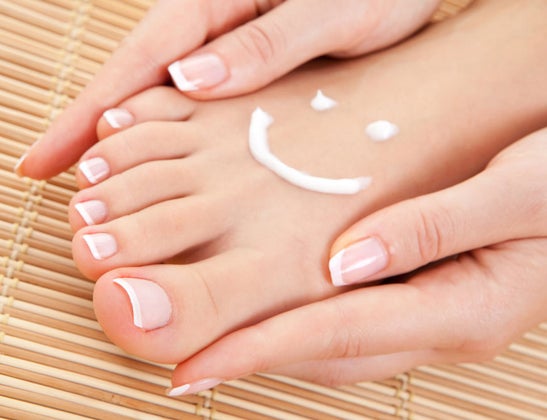New perk! Get after it with local recommendations just for you. Discover nearby events, routes out your door, and hidden gems when you sign up for the Local Running Drop.

Q: I started running this year. I love how it makes my mind and body feel, but my feet are killing me. They’re achy when I wake up and sometimes when I’m just walking around. Help! —Leesa
A: First, welcome to the running world! Second, our sport can be wearing on your muscles and joints, but the foot pain you’re experiencing isn’t normal. Being a runner does not have to come with a side of aching feet. The great news is there are plenty of fixes that can get you back running pain-free.
Develop like a fine wine.
Running has a way of becoming addictive once you experience those first few highs. The joy and excitement can quickly lead to piling on the mileage too soon. The downside is this can overload your body, leading to minor aches and pains in your feet, knees, hips and low back.
The general rule of thumb is to increase your mileage by no more than 10 percent each week. Keep a log and track how your body feels. Everyone has a unique running recipe and a log can help you find the right balance of running frequency, duration, intensity and recovery.
Invest in proper running shoes.
If you buy shoes solely based on looks, you’ll look fancy for your next run, but they may fail to protect your feet and body. It is vital to get fitted at a local running specialty store for shoes that meet your needs. Some of us require less support, others more cushioning. A trained professional will help you find a pair that matches your style and keeps your tootsies happy.
Examine your everyday footwear.
It’s possible for foot pain to be aggravated not by running but by lifestyle habits. I hate to say it, but wearing high heels is one of the worst things women runners can do. When you slip on a pair of stilettos, your weight shifts forward, putting excessive pressure on the forefoot and squeezing our little piggies into a space the size of a Dorito chip.
Modifying your heel-wearing time will reduce aches and may even improve your running form by reducing calf and foot tightness. Try to sport comfortable, flat shoes as often as possible.
Get stronger.
For feet to stay healthy, they have to be strong. Performing exercises barefoot will ensure that every muscle and ligament in your lower body is in working order. To complement your running, weave in strength work two or three times during the week. This can be in the form of yoga or body-weight movements. The key is to include exercises that improve mobility and balance to prevent the development of weak links in your body. A little bit of work goes a long way. Try performing the following exercise regularly to see improvements…
Single-Leg Balance:
Stand barefoot holding the back of a chair for balance, feet facing forward. Keeping your right leg straight, bend the left leg at the knee, so your foot is at a 90-degree angle behind you. Hold this position for 30 seconds and repeat on each leg 2 to 4 times. As your strength and balance improve, let go of the chair. As you continue to progress, you can make this exercise more demanding by raising your arms overhead, closing your eyes or adding a pillow or pad underfoot.
Fix your form.
Increasing your cadence is one of the easiest ways to improve running form. Perform a quick inventory of how often your foot hits the ground (your cadence) by counting the number of strides on one foot for one minute. If you count fewer strides than 88, you’re not striding quickly enough.
A slow cadence likely means you are covering too much ground with every step, which increases the impact forces on your body. One fun way to increase cadence is to listen to a high-tempo song and to try to match the beat. Apps like Podrunner or Motion Traxx offer playlists at 180 beats per minute.
Improving your foot health is vital. After all, they are our foundation. Investing just a little time in strength and flexibility exercises and adjusting your footwear and training routine are simple steps that can prevent pain and improve your running performance down the road.
Jenny Hadfield is the co-author of “Running for Mortals and Marathoning for Mortals.” You can find more of her training programs, tips and running classes at coachjenny.com.